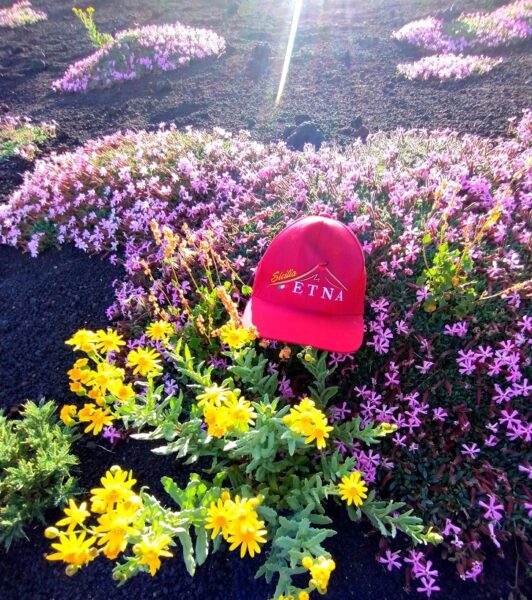It is not easy to see the Saponaria (Soapwort) flower. This is a privilege reserved for a few lucky and skilled hikers. Especially for fans of Mount Etna, the Sicilian volcano that never ceases to amaze and fascinate. The phenomenon of the flowering of these “pink flower cushions” (or white flower too) lasts a few days and must be seized at once. Imagine it a bit like … the flowering of the African deserts, which in certain periods of the year, after two or three days of torrential rains, for a few hours, fill with petals and colours.
The legend of Soapwort’s Venus pillows
In ancient times, these plants that grow in groups forming dense “pillows” of flowers had already amazed the inhabitants of Sicily. And they had given light to their imagination. The Greeks, who had no problems in creating wonderful stories related to the territory, had given themselves a “sacred” explanation of the phenomenon of Soapwort.
According to them, in fact, it was the work of the goddess Venus. It was she who scattered the mountain with flowery and perfumed pillows, in order to create magical and intimate corners on which to lie down with her lovers. Places of passion and beauty, which intertwine their magic with that of the creatures of the naturalistic imagination. In fact, it seems that even mysterious “elves” have their home among the Soapwort flowers, especially at night…!
Soapwort, a beautiful and… good plant
The name Soapwort comes from the word soap. It’s not a casuby chance. In fact, in ancient times a detergent was extracted from this plant in order to clean fabrics. They especially used it to sanitize wool.
But over time, and thanks to the search for new processing methods, soaps for washing human skin were also extracted from Soapwort.
Today this plant is not only a source of beauty, but also of many benefits. It has been discovered that it is able to help the body fight intoxications, helps to promote diuresis, can cure various ulcers, irritations and dermatitis. It is not excluded that there are still many surprises that Soapwort will reserve for us, and botanical science could discover new ones shortly. For the moment, all that remains is to admire it in amazement.
 How to recognize Soapwort
How to recognize Soapwort
Soapwort is a seemingly delicate plant, but is actually very resistant. Formed by stems that in some species can reach 70 cm in height, it often grows close to the ground, forming rounded cushions with leaves and flowers.
The leaves are lanceolate, smooth and thin. The flower has five pink or white petals and grows in small close clusters. It usually blooms between June and October and releases its pleasant scent at sunset and in the early part of the evening. The plant grows without problems on apparently arid and stony soils, but rich in underground nutrients. You also find it over one thousand meters height.
Where to find it on Etna …
On Mount Etna Soapwort certainly grows over a thousand meters a.s.l. You find it in greater quantities on the southern and eastern slopes, but it is not uncommon to “sight” it on other sides of the volcano as well.
If you are at the Silvestri Craters, between June and July, you will see considerable quantities of pink Soapwort cushions decorating the sides of these extinct volcanic vents. The plant has a short life. You will have to be very good at guessing the right moment, usually after abundant and short rains, arriving immediately after a hot period. In a short time it will become all green and then dry up, to disappear under the snow at the beginning of winter. (photos by G.Musumeci)